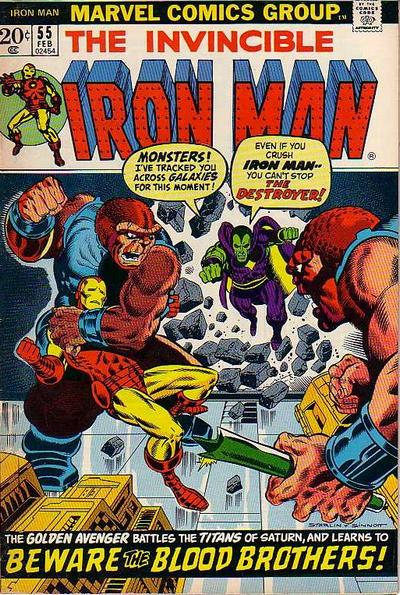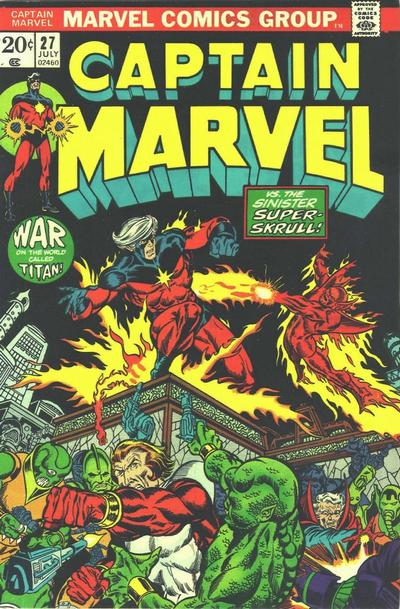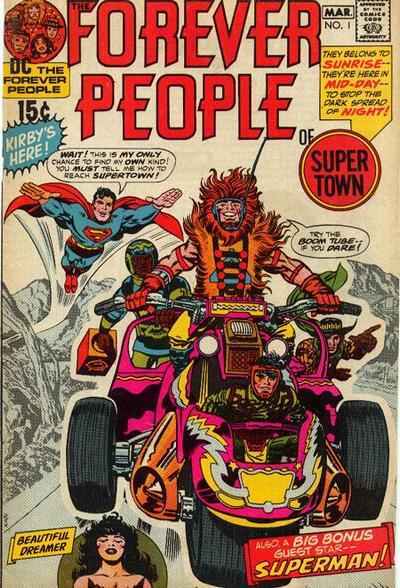Recalling the origin of Thanos in an interview about The Avengers for the Los Angeles Times, Jim Starlin said:
Thanos came to me while I was taking a psychology class in college after coming out of the service; the ol’ Thanos/Eros concept. I had him sort of roughed out before I ever started working at Marvel. When editor Roy Thomas asked me to do a fill-in Iron Man, I decided to add him to the mix. I showed some character sketches I had of the character to Roy, he asked if I could perhaps bulk up Thanos some and then let me run with it. Mike Friedrich then dialogued the issue. As time went on, Thanos just sort of grew organically on his own. Not sure where his loving Death came from. At the time I was recently out of the service and rather messed up. Hard to remember what was going through my head back then.
I’d like to add a few notes to supplement Starlin’s memory, if I may:
From Freud to Thanos
The “ol’ Thanos/Eros concept” is actually the old Thanatos/Eros concept. Thanatos was the Greek word for “death” and the name of a Titan described by Hesiod and Homer as one of the twin sons of the gods of Night and Darkness. The Romans referred to Thanatos as Mors, Letus, or sometimes Orcus, a name that will be familiar to players of Dungeons & Dragons, where Orcus’ realm is named “Thanatos: the Belly of Death.”
The term thanatos was adopted by Freud’s student Wilhelm Stekel. Stekel used it to refer to a theory Freud had proposed in 1920 about a self-destructive “death instinct” (Todestrieb). Freud postulated that the death instinct stood in opposition to the life-seeking libidinal instinct he sometimes called Eros, borrowing the Greek name for Cupid. It should be noted that like most things Freud claimed, there was no experimental evidence to support the thanatos theory, and professionals remain skeptical of its validity. Captain America and Spider-Man are among those who have taken issue with Freud over this.
In any case, Freud’s followers introduced Stekel’s concept of thanatos to pop culture, where it fueled fictional explorations of psychoanalysis. Starlin’s “Thanos” is evidently an elision of “Thanatos.” Thanos first appeared in Iron Man #55 (February 1973) along with a sibling named Eros of Titan, also known as Starfox.

Essential Iron Man, Vol. 4 (Marvel Essentials)
Thanos and Darkseid: From the Anti-Life Equation to Death
Death, the object of Thanos’ obsession, was introduced a few months later in Captain Marvel #27 (July 1973).

Essential Captain Marvel, Vol. 2 (Marvel Essentials)
Over two years earlier, DC’s Forever People #1 (March 1971), written and drawn by Jack Kirby, had introduced Darkseid’s obsession with an ultimate weapon called the Anti-Life Equation.
Jack Kirby’s The Forever People
Darkseid’s influence on Thanos was confirmed by Starlin in an interview with Brian Cronin for the June 24, 2010 edition of Comic Book Legends Revealed, where Starlin supplied a few details about the genesis of the character:
Kirby had done the New Gods, which I thought was terrific. He was over at DC at the time. I came up with some things that were inspired by that. You’d think that Thanos was inspired by Darkseid, but that was not the case when I showed up. In my first Thanos drawings, if he looked like anybody, it was Metron. I had all these different gods and things I wanted to do, which became Thanos and the Titans. Roy took one look at the guy in the Metron-like chair and said: “Beef him up! If you’re going to steal one of the New Gods, at least rip off Darkseid, the really good one!”
Kirby himself may have been borrowing here from Freud, whose influence appears elsewhere in New Gods. An example is the Oedipal conflict between Orion and Darkseid. Whatever the story there, Darkseid’s quest for the Anti-Life Equation was a clear predecessor for Thanos’ infatuation with Death.


